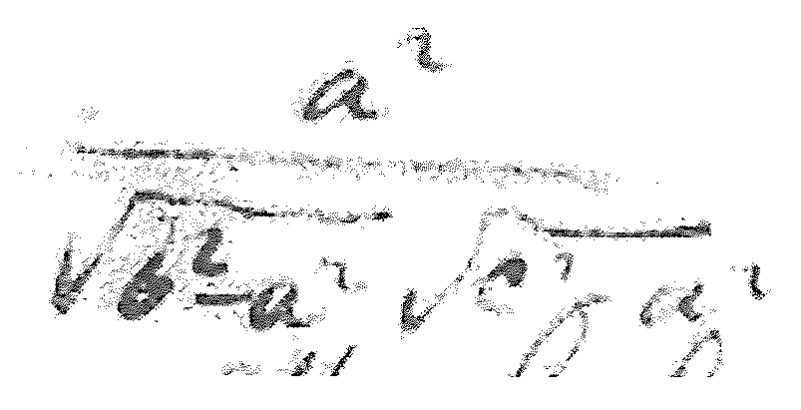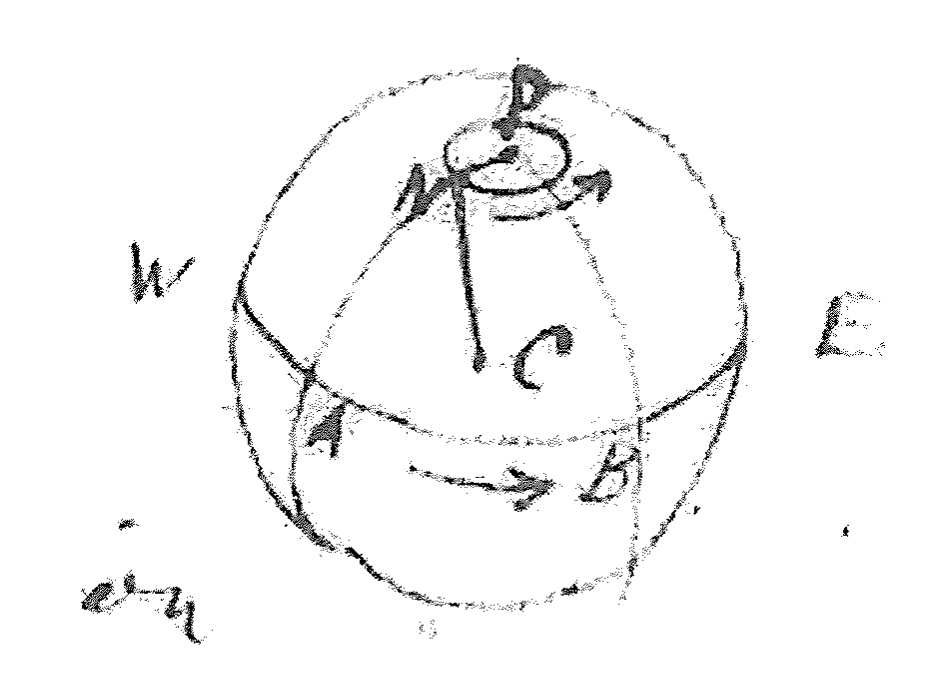James Clerk Maxwell to Faraday 21 May 1861
8 Palace Gardens Terrace | W | 21 May 1861
Dear Sir
If a sphere were set in rotation about any diameter, it would continue to revolve about that diameter for ever. If the body is of unequal dimensions it will continue to revolve about the same axis, provided that axis be a principal axis of the body, (of which there are always three).
If the original axis of rotation is not a principal axis then the axis of rotation will change its position both in the body and in space.
In the body, the extremity of the axis of rotation will describe an ellipse (or circle) about the greatest or least axis. In space it describes a complicated curve. The ellipse is described in

revolutions of the body, where 1/a1, 1/b2, 1/c3 are the moments of inertia about the principal axis.

If the body be very nearly spherical like the earth, this motion is very slow. If P be the end of the principal axis of the earth, and N that of the actual axis of rotation, the rotation being from W. to E, then N will travel round P from W. to E so as to complete its circuit in about 325.6 mean solar days4[.]
This phenomenon depends only on the configuration of the earth, and its rotation round an axis which is nearly but not exactly a principal axis, and would be the same if all other bodies were absent from the sky. The position of the pole among the stars is not at all affected but the latitude of every place on the earth is alternately increased and diminished, the maximum latitude occurring when N is in the same meridian with the place. Thus our maximum should occur sooner than that of Paris or Poulkova[.]
The amount of the variation can only be determined by observation[.] I have not the means at present of making reference to the statement that Peters5 astronomer at Konigsberg or Berlin has determined the amount at less than 1/10 of a second, and the period about 312 days. He has also stated the epoch of maximum at his observatory which I do not remember6.
An explanation of this motion, illustrated by experiments was published by me in the Edinburgh Transactions Vol XXI pt IV “On a Dynamical Top”7.
The motion, without reference to the earth, is described in Poinsots8 treatise on Rotation9.
The Astronomer Royal says he may possibly be able to test it by a long series of observations[.]
As far as I am concerned, you are at liberty to speak to any one on the subject[.]
I have my dynamical top in London, and can show you the motion at any time10.
I remain | Yours truly | J.C. Maxwell
Bibliography
MAXWELL, James Clerk (1857): “On a Dynamical Top, for exhibiting the phenomena of the motion of a system of invariable form about a fixed point, with some suggestions as to the Earth’s motion”, Trans. Roy. Soc. Edinb., 21: 559-70.
PETERS, Christian August Friedrich (1853): “Recherches sur la parallax de étoiles fixes”, Rec. Mém. Acad. Sci. Astron. Pulkova., 1: 1-180.
POINSOT, Louis (1852): Théorie Nouvelle de la Rotation des Corps, Paris.
Please cite as “Faraday4004,” in Ɛpsilon: The Michael Faraday Collection accessed on 30 April 2024, https://epsilon.ac.uk/view/faraday/letters/Faraday4004